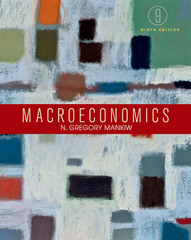Question
Questions 1. (2.5 pts) Based on the figure showing estimated elasticities after the price increase, what times of day have the most elastic parking demand?
Questions 1. (2.5 pts) Based on the figure showing estimated elasticities after the price increase, what times of day have the most elastic parking demand? Why do you think this is the case? Explain.
2. (2.5 pts) Based on the figure showing estimated elasticities after the price increase, what times of day have the most inelastic parking demand? Why do you think this is the case? Explain. 3. (5 pts) In Table 4, you can note that average parking turnover decreased across all neighborhoods regardless of whether the price increased, decreased, or stayed the same. Should this affect the way you interpret the decrease in parking turnover where there were price increases? Why or why not? Explain.
4. (5 pts) Calculate the average parking rate duration elasticity separately for neighborhoods where there was a price decrease and a price increase. Show your work. Hint: Use the average price in 2010 and average price in 2011 for the neighborhoods as a group in Table 3 to get an aggregate price for the percentage change calculation 5. (5 pts) Is the parking rate duration elasticity elastic, inelastic, or unit elastic in these neighborhoods? If you were a policy maker who wanted to decrease parking rate duration by 10% in those neighborhoods to increase turnover, what size price increase would be needed separately in the increased rate and decreased rate neighborhoods? 6. (5 pts) Table 7 shows that revenue declined in neighborhoods where there was a price decrease and increased in those neighborhoods where there was a price increase. What does this imply about whether parking demand was elastic or inelastic in those neighborhoods? How do you know? Explain. 7. (5 pts) Based on estimated elasticities in Table 3, would it increase parking revenue in all neighborhoods to increase prices? How do you know? Explain. 8. (20 pts) Envision you are a business in the First Hill neighborhood. You own a popular restaurant that relies primarily on customers driving from other parts of Seattle. You know an average customer group in your establishment stays for an average of 60 minutes (1 hour), spends $100, and you on average see 100 customer groups (arriving in the same car) each day. Make a quantitative argument of how much an additional $1.00 increase in hourly parking rates would affect your business (You can assume the elasticities and estimates shown in the tables would be the same over this price range). Generate a dollar amount estimate of how the parking rate increase would affect your sales. Come up with a number or numbers, show your work, and explain in words your reasoning how you came up with that number. Hint: Elasticity = % change in outcome variable/% change in treatment variable You can use this formula to come up with almost all the numbers you'll need for #8 if you combine it with the values given in the question and the estimated elasticities in the tables, Revenue is simply price times quantity, which would be affected by the change in parking rates? Think how the parking rate change would affect those variables.
Step by Step Solution
There are 3 Steps involved in it
Step: 1

Get Instant Access to Expert-Tailored Solutions
See step-by-step solutions with expert insights and AI powered tools for academic success
Step: 2

Step: 3

Ace Your Homework with AI
Get the answers you need in no time with our AI-driven, step-by-step assistance
Get Started


